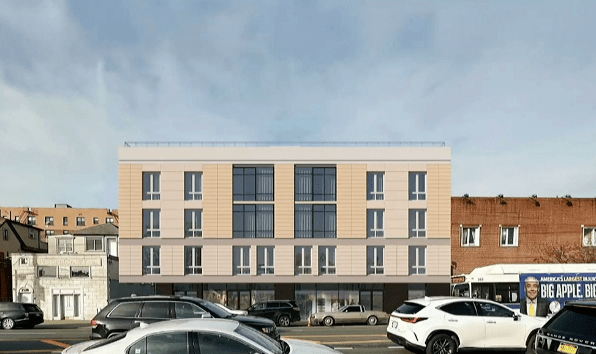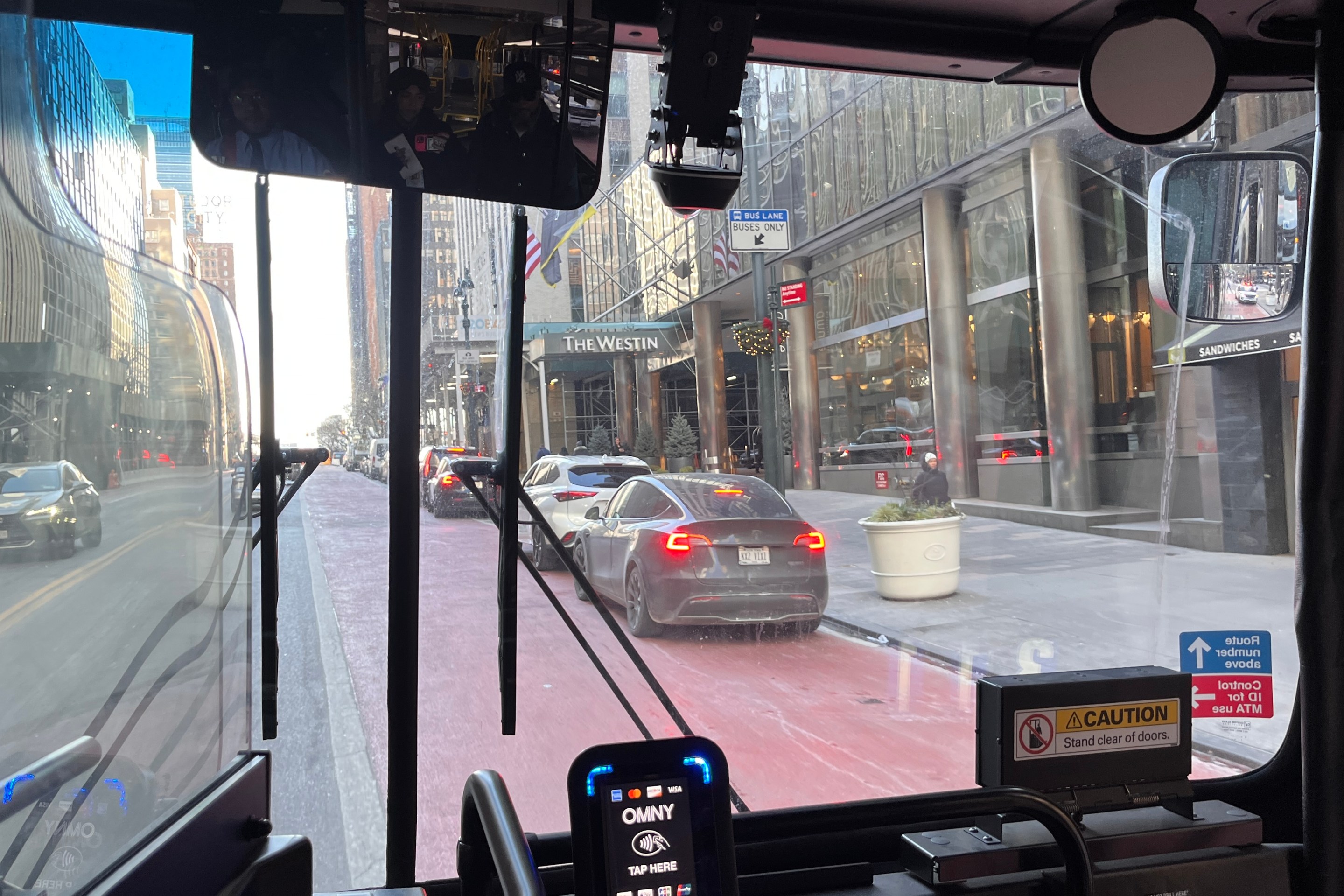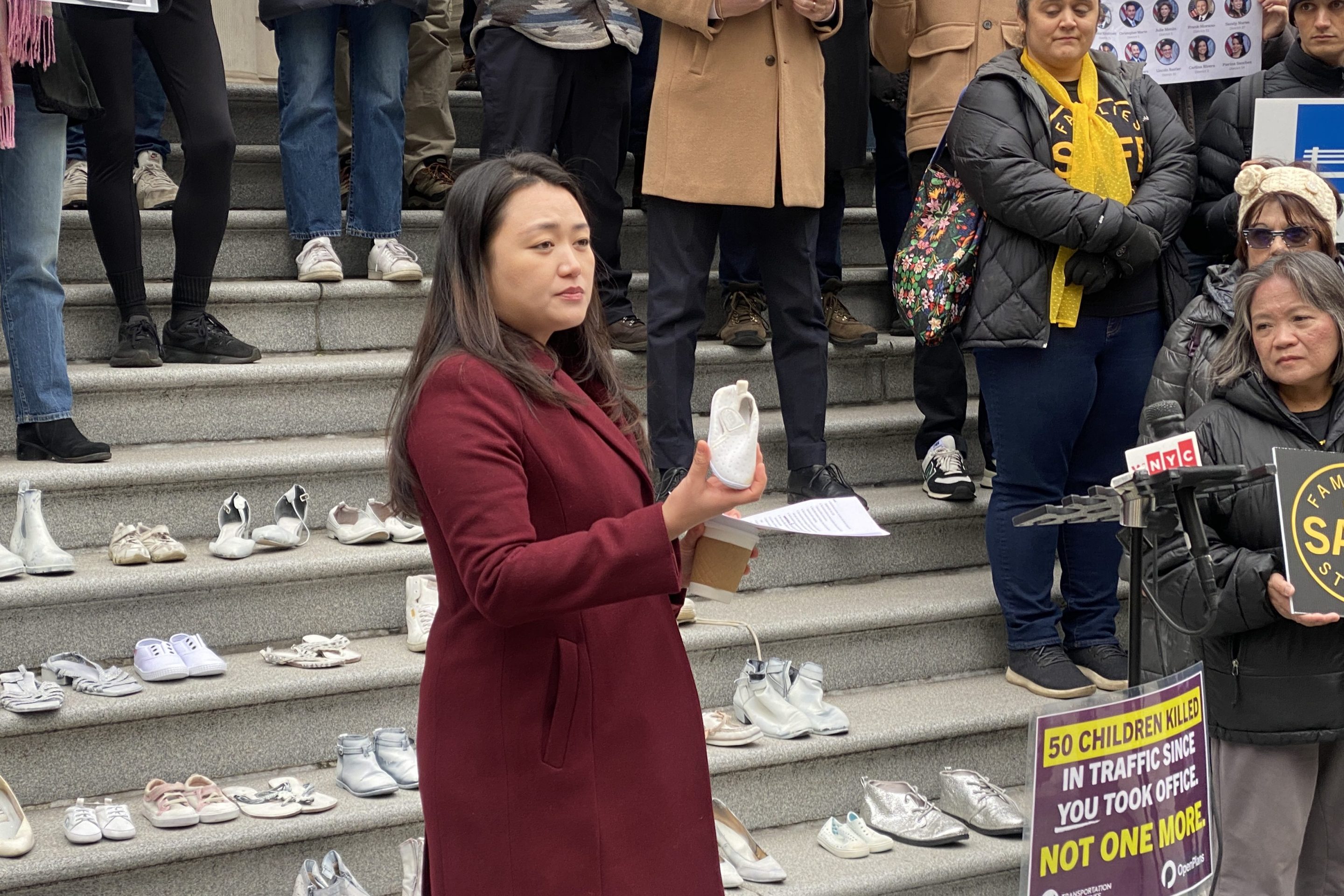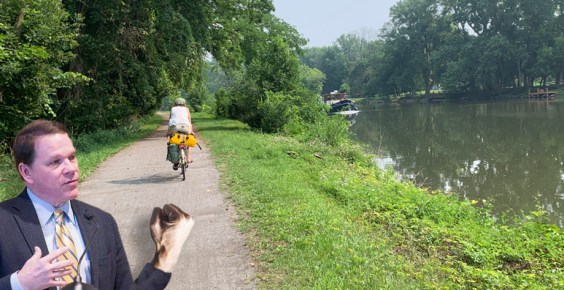One City Council member from South Brooklyn prefers housing for cars than housing for people.
Council Member Inna Vernikov (R-Sheepshead Bay) has successfully gotten developers to shelve an ambitious bid for a rezoning, instead cutting the amount of affordable housing in half and building more parking spaces than housing units.
During Tuesday’s City Council Land Use hearing, Vernikov signaled her support for the revised rezoning proposal at 2501 Coney Island Ave. — one that will allow only four stories comprising 27 units and 35 parking spaces, down from the original proposal of 11 stories with 60 units and 24 parking spaces.
So 33 fewer families can move into the neighborhood. But 11 more cars can.
“When this proposal first came to me there were significant concerns ... with what it would do to the character of the neighborhood, and also with parking which is always a concern with any new project in the district due to our traffic issues and lack of sufficient parking generally,” Vernikov at the hearing. “We were much further apart than we are today."
She said the soon-to-be-approved project is the result of "negotiations and much back and forth,” but it will also result in the neighborhood continuing to lag behind the city average for housing construction.
And whether Vernikov cares to acknowledge it or not, the issue is hitting home: Fifty-five percent of households in Vernikov's district spend more than 30 percent of their income on rent. But between 2014 and 2022, there were only 246 affordable housing units built in the district (compared to the city average of 1,557), according to data compiled by the New York Housing Conference. With Vernikov’s negotiated project, the amount of affordable units is halved, from 16 to just eight.
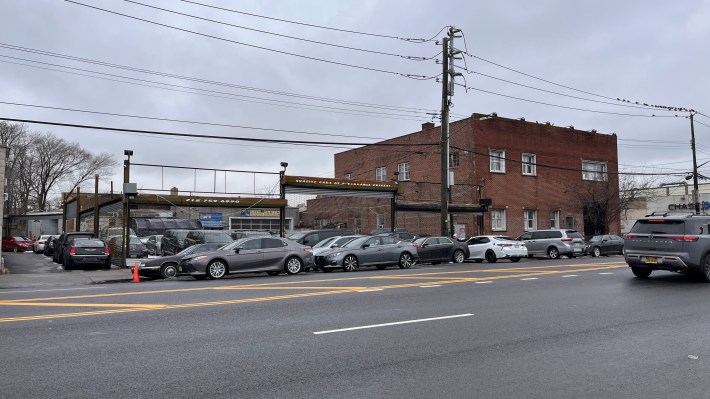
Advocates say the city is in a housing crisis and needs as many units as it can get.
“This project now has more parking spots than homes — in the midst of a housing crisis and in the most transit-dense city in the nation, that's inexcusable,” said Rachel Fee, the executive director of the New York Housing Conference. “Especially in a district where nearly one-third of renters are severely rent burdened and only 14 affordable units were built last year.”
At the end of last year, the City Council passed the Mayor Adams’s City of Yes for Housing Opportunity, which changed 1960s-era zoning to spur production of “a little more housing” everywhere. But in cases of developments needing additional zoning changes, the local Council member still has significant influence under the tradition of “member deference” on land-use issues.
The City of Yes plan also reduced the amount of required costly-to-build on site parking in each zoning district as an incentive for developers to build more housing.But in places like Sheepshead Bay, where the community board and the local Council member prioritize parking, developers often propose more parking than the new lower minimums.
But when developers came to Brooklyn Community Board 15 with the original plan that exceeded the new City of Yes rules, the board still rejected it, citing the building's height and need for parking as reasons to vote down the project. The developer returned with a new plan, cutting the height from 11 stories to eight, cutting the units from 60 to 35, and increasing the parking to 35 spots from 24, the one-to-one ratio demanded by the board and Vernikov.
Still, the board and Vernikov were unimpressed and demanded more concessions.
“The top issue on a day-in day-out basis is really parking,” said Vernikov’s Land Use director at the City Planning Commission hearing in February. “We have to fight to protect every parking spot and get more parking spots.”
The area has many transit options, the Neck Road Q train station and the Avenue U station on the F train are both a few short blocks away. And the B68 bus runs along Coney Island Avenue, with a connection to the B3 nearby.

The initial concerns over parking from the community board were due to the rampant illegal parking on that stretch of Coney Island Avenue. Officers from the nearby 61st Precinct stationhouse park their personal cars on the sidewalk and all over the curb. And car-centered businesses double- and triple-park along the avenue. But instead of asking for more enforcement, the board and Vernikov instead asked for less housing.
"To be fair, Council members have few levers to remedy neighborhood concerns like the widespread illegal parking highlighted by the community board," said Howard Slatkin, the executive director of the Citizens Housing and Planning Council and a former top official at the Department of City Planning. "But the influence a Council Member has over land-use decisions doesn’t fix those problems. It just channels them into preventing new housing, which is bad for the city."
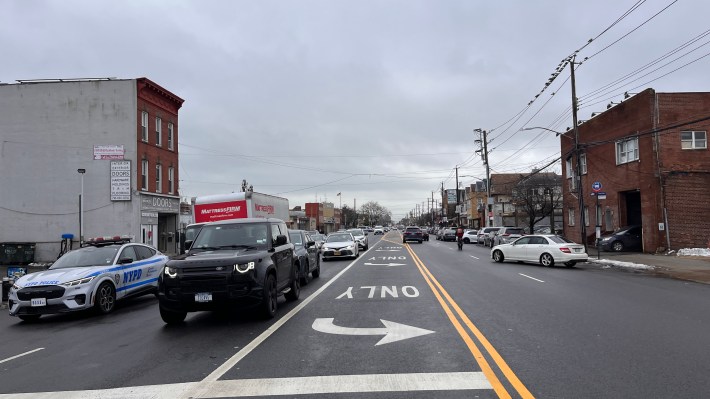
Not that Vernikov wants to change that; her district is ranked 41 out of 51 Council districts in affordable housing.
There is a chance that the Mayor's Charter Review Commission will introduce reforms to eliminate member deference — and Brooklyn Borough President Antonio Reynoso, himself a former Council members, said the time might be right, given how the current deference leads to parochialism.
“[A] Council member has local vision, they’re never going to go past that," he said at a recent charter commission hearing. "[But when] Council members do it, they get killed for it. Their jobs are threatened for doing what’s good for the city.”
Council Member Vernikov did not respond to request for comment.
